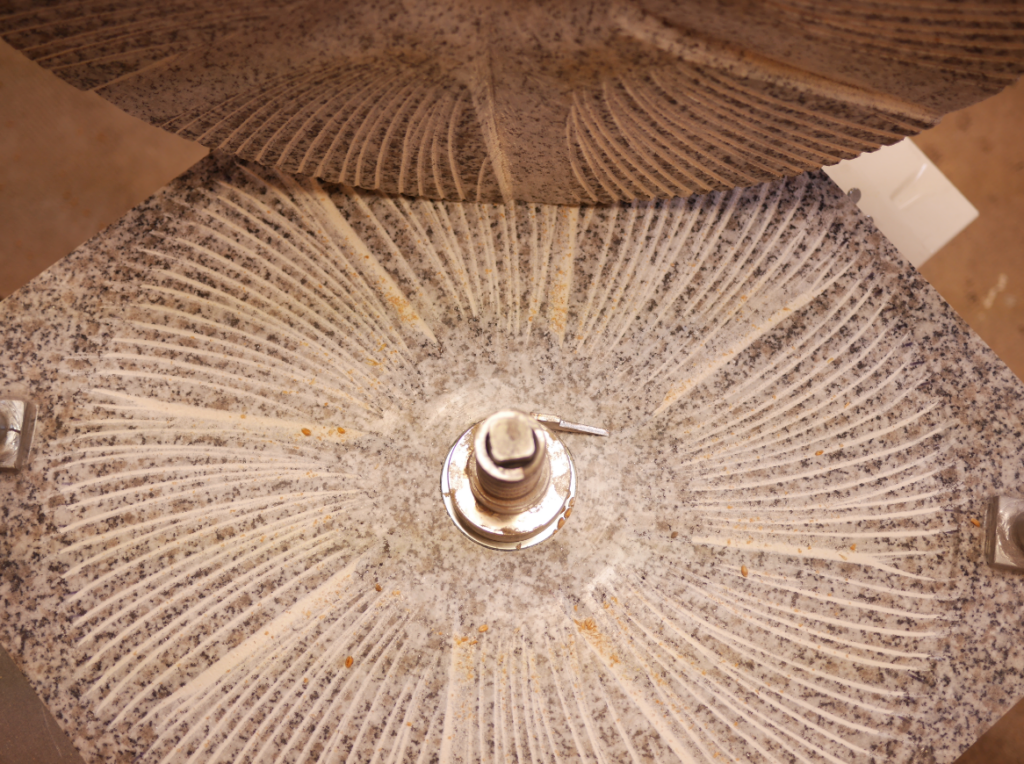Non-tillage in organic farming
Manfred Wenz is one of, if not ‘the’ pioneer of no-till in organic farming. But before adopting this system, he worked his land conventionally, with many failures.
Moving on to a technique he owes to Hand Kemink, which enabled him to heal his soils and double his yields (by producing clean wheat without any intervention between sowing and harvesting), he visited estates practising biodynamic farming, and introduced this technique to his soils 18 years ago!
Ulrich SCHREIER is an organic and biodynamic farmer with 120 hectares at Saint Augustin-des-Bois in Maine et Loire. He drew on the experience of Manfred WENTZ and an Austrian farmer, Franz BRUNNER, to grow organic crops on his farm. Crop planting techniques have evolved over time: from keming ploughing (a simplified cultivation system developed in the Ukraine), Ulrich and his colleagues across the Rhine have moved on to scalping techniques (with crow’s-foot type ploughshares or flat ploughshares), culminating in direct seeding.
Ulrich SCHREIER presents more of an approach than a system. In his view, ‘everyone has to find the most appropriate itinerary depending on the soil and climate conditions and the needs of the cropping system (rotations, animals, etc.)’.
Green manure in rotation with cereals
On his farm in Anjou, he is developing a growing system that uses no farmyard manure and no grazing animals.
He prefers mowing to manage the existing cover or grassland. ‘It’s cheaper than shredding and better for the degradation of vegetation by soil fauna,’ he says. These grass and clover cover crops are not exported, but systematically left in place to improve soil fertility. Winter cereals are sown directly into the white clover using an ‘ecodyn’ seed drill fitted with crow’s feet (12cm x 30cm shield). Beforehand, this cover is destroyed in 2 to 4 passes with the same tool, whose tines are adjustable in height and inclination. These operations are enough to establish the winter cereal that will take over from the clover. After harvest, the straw is shredded and spread over the entire surface of the soil.

Photos – all rights reserved http://agriculture-regenerative.net
Ulrich Schreier attaches great importance to his choice of crops. He prefers triticale to wheat and also grows cereals for human consumption: rye and spelt.
The main constraint of his system is to have a ‘blank’ year (green manure with no harvested product) with a mown cover crop every 5 or 6 years.
The typical rotation practised on the plots on his farm is: white clover/wheat or triticale/spelt wheat or rye-red clover seed/wheat.
Saving energy and inputs
This growing system, which appears to be self-sufficient, is inspired by techniques developed in vegetable production, with grass crops spread as mulch to produce potatoes without fertiliser or mechanical weeding.
This experiment is in line with the guiding principle of non-disturbance of the soil. The aim is to save energy and inputs, reduce the risk of weeds germinating and optimise the biological fertility of the soil. Ulrich estimates that the living biomass under natural grassland is comparable to the equivalent of 20 LU/ha. Well nourished (by regular inputs of organic matter in the form of green manures), this biomass in turn contributes to sufficient fertility to produce crops with satisfactory yields in organic farming.
This original experiment is not isolated, to say the least, and deserves further investigation to confirm its potential in our organic farming systems.
Source: https://goo.gl/BxfSRC
What is Regenerative Agriculture?
Inspired by the way natural grasslands function, where the soil is always covered with diverse vegetation, Regenerative Agriculture seeks to restore degraded soils by increasing their biodiversity, organic matter content and self-fertility.
Effective and resource-efficient, it draws on a range of tried and tested agro-ecological approaches.
Regenerative Agriculture addresses both the soil and the plants, and in particular the symbiotic relationships between vegetation and soil life. It is suitable for all types of agriculture: mixed farming, arable farming, market gardening, arboriculture, viticulture and other specialised crops, both organic and biodynamic and conventional.

Photos – all rights reserved http://agriculture-regenerative.net
5 steps to soil regeneration
On the Regenerative Agriculture website, you can find a 5-step method for regenerating the soil.
- Chemical analysis and restoration of the soil’s mineral balance using the method developed by William Albrecht (1888-1974), an American agronomist of German origin.
- Keeping the surface of the soil evergreen: undersown crops and diversified green manures.
- Mechanical destruction, incorporation and shallow composting of cover crops and harvest residues.
- Steer the soil’s metabolic processes using a range of ferments and preparations to promote the recycling of organic matter and the formation of stable clay-humus aggregates.
- Vitalise crops using lactic ferments, compost tea, biodynamic preparations and various foliar fertilisers.
A living soil, a better cereal, a respectful mill, for high added-value flour
One of our customers told us that ‘there’s no secret, if you want better flour, choose the right mill’. Now equipped with an Astréïa mill for several months, he has chosen to equip his partners with the same model to respect the work done upstream on the land.
The work done on the land upstream must be enhanced by using a mill that respects the cereal. By rolling it between its millstones, your Astréïa mill will be able to extract 80% of the grain in a single pass.
Going further
To find out more: ‘The lack of sulphur’ a PDF article: consult here


